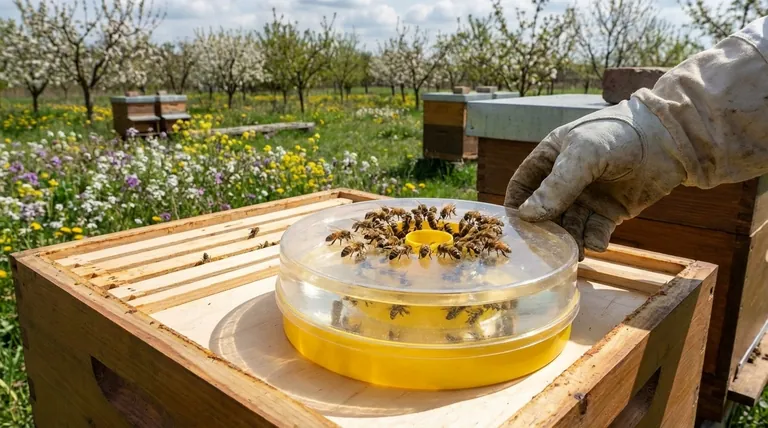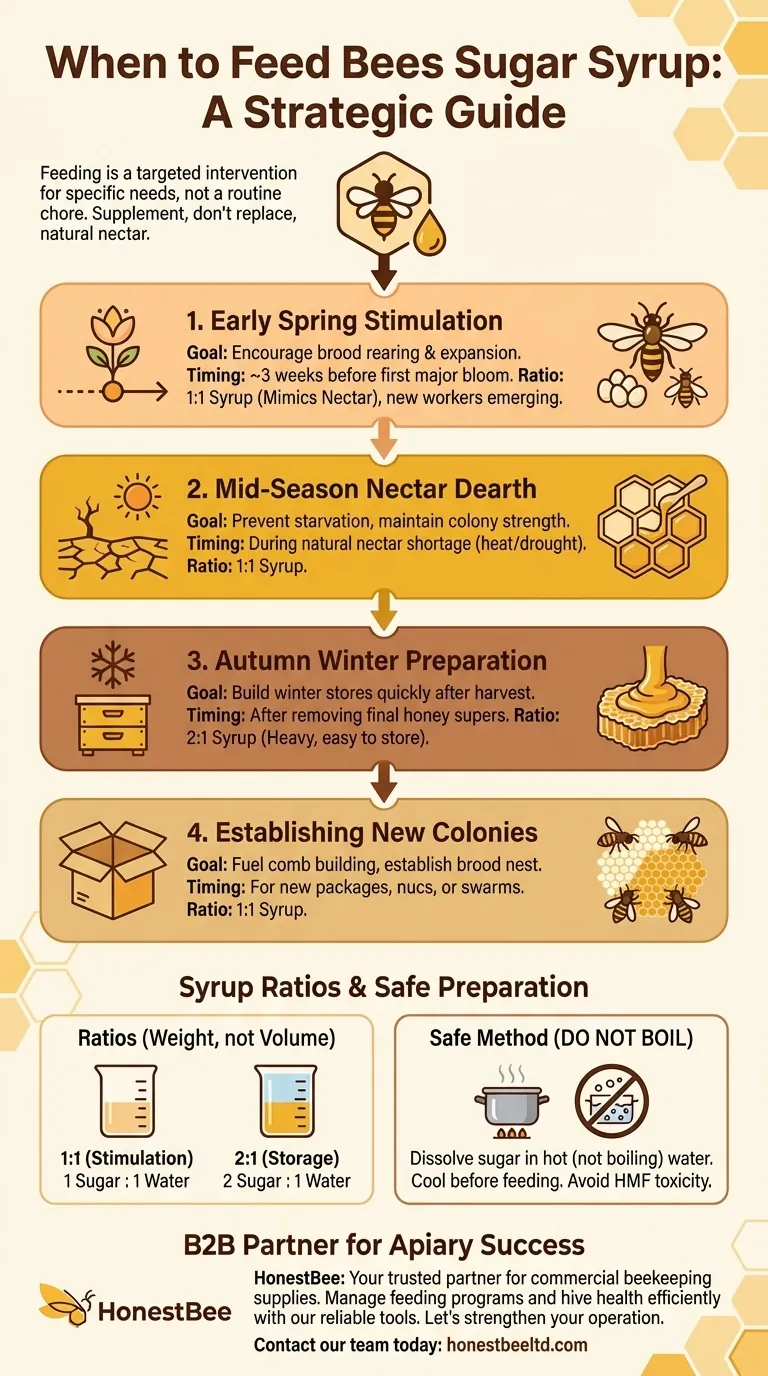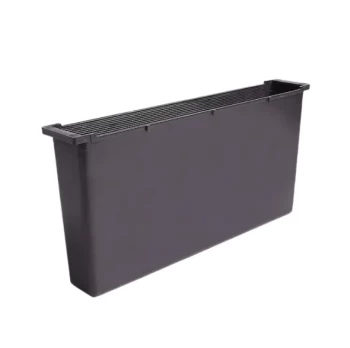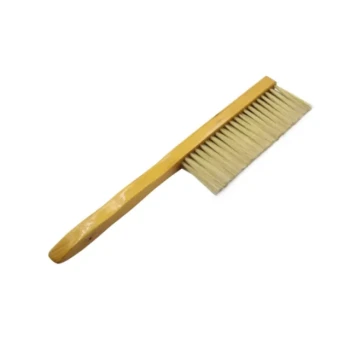The short answer is this: you should only feed bees sugar syrup during four specific situations—in early spring to stimulate growth, during a mid-season nectar shortage, in the autumn to prepare for winter, or when establishing a new colony. Feeding is a targeted intervention, not a routine chore, and the timing depends entirely on the specific needs of the hive and the local environment.
Feeding sugar syrup is a strategic tool to supplement, not replace, natural nectar. The key is to match the timing and syrup concentration to a specific colony objective, whether it's encouraging growth, ensuring survival, or building winter stores.

The Four Critical Scenarios for Feeding
Understanding why you are feeding is more important than simply knowing when. Each scenario requires a different approach and has a distinct goal for the health and productivity of the colony.
Scenario 1: Early Spring Stimulation
Before the first major flowers bloom, a light syrup can act as a powerful signal to the queen.
This feeding mimics an early nectar flow, encouraging her to begin laying eggs and expand the brood nest. This ensures the colony has a robust population of forager bees ready for when the main nectar flow begins. A common guideline is to start this feeding about three weeks before the first major bloom in your area.
Scenario 2: During a Nectar Dearth
A "dearth" is a period, often in the heat of mid-summer, when few nectar-producing plants are in bloom.
During a dearth, a large, populous colony can quickly consume its stored honey. Feeding syrup provides the necessary carbohydrates to prevent starvation and maintain the colony's strength until natural forage becomes available again.
Scenario 3: Autumn Winter Preparation
After you've removed the final honey supers for the season, you must assess the hive's winter stores.
If the colony hasn't stored enough honey to survive the winter, feeding a heavy sugar syrup is critical. This allows them to quickly process and store the energy they will need to cluster and generate heat during the cold months.
Scenario 4: Establishing New Colonies
A new bee package, a nucleus hive (nuc), or a swarm has a monumental task: building wax comb.
Bees consume enormous amounts of energy to produce wax. Feeding a new colony a steady supply of syrup provides the fuel they need to draw out comb, establish a brood nest, and build their population quickly.
Preparing and Feeding Syrup Correctly
The method of preparation and delivery is just as important as the timing to ensure the bees benefit and to avoid causing harm.
Syrup Ratios Explained: 1:1 vs. 2:1
The concentration of your syrup should match your goal. Ratios are measured by weight, not volume.
- 1:1 Syrup (Spring/Stimulative): One part sugar to one part water. This light syrup mimics natural nectar and is easy for bees to process. It is used to stimulate brood rearing and comb building.
- 2:1 Syrup (Autumn/Storage): Two parts sugar to one part water. This thick syrup requires less work for the bees to evaporate the water from, making it ideal for quickly building up winter food stores.
The Safe Preparation Method
To prepare the syrup, pour near-boiling water over white cane or beet sugar and stir until it is completely dissolved.
Crucially, do not boil the sugar-water mixture. Boiling can create hydroxymethylfurfural (HMF), a compound that is toxic to bees. The finished syrup should be clear and cool to room temperature before being given to the bees.
Common Feeder Types
Several types of feeders are available, from small-scale to commercial. The goal is always to provide syrup inside the hive to prevent access by other insects or bees from neighboring colonies.
Common options include frame feeders that take the place of a frame inside the hive box, top feeders that sit above the brood nest, and simple jars or buckets with small holes in the lid that are inverted over the inner cover.
Understanding the Trade-offs and Risks
While beneficial, feeding sugar syrup is not without potential downsides. A responsible beekeeper must manage these risks carefully.
The Critical Risk of Robbing
The scent of sugar syrup can attract bees from other hives, initiating a "robbing" frenzy where the stronger colony attacks the weaker one to steal its resources.
To minimize this risk, always place feeders inside the hive and reduce the entrance size of weaker colonies. It is also best practice to feed in the evening, which gives the bees time to find and settle on the syrup before outside activity begins the next morning.
Contaminating the Honey Harvest
Never feed syrup while you have honey supers on the hive that are intended for human consumption.
Bees will store sugar syrup just as they do nectar, which will adulterate your final honey product. All feeding must stop as soon as a natural nectar flow begins and the bees start bringing in resources to make honey.
Making the Right Choice for Your Colony
Your decision to feed should always be based on a direct observation of your colony's needs and your specific goals as a beekeeper.
- If your primary focus is building up a new or weak colony: Begin feeding a 1:1 syrup immediately to provide the fuel needed for building comb and raising brood.
- If your primary focus is maximizing spring population: Start feeding a 1:1 syrup approximately three weeks before the main nectar flow in your region.
- If your primary focus is preventing starvation: Monitor your hives during a summer dearth and provide a 1:1 syrup if you notice they are becoming light on stored food.
- If your primary focus is ensuring winter survival: After the final honey harvest, feed a heavy 2:1 syrup in the autumn until the bees have stored enough to last the winter.
Ultimately, feeding bees is a powerful management tool that, when used wisely, can ensure your colonies are strong, healthy, and productive.
Summary Table:
| Scenario | Goal | Recommended Syrup Ratio |
|---|---|---|
| Early Spring Stimulation | Encourage brood rearing before the main nectar flow | 1:1 (Sugar:Water) |
| Mid-Season Nectar Dearth | Prevent starvation when natural forage is scarce | 1:1 (Sugar:Water) |
| Autumn Winter Preparation | Build up winter food stores quickly after honey harvest | 2:1 (Sugar:Water) |
| Establishing New Colonies | Fuel comb building and population growth in new hives | 1:1 (Sugar:Water) |
Ensure Your Apiary's Success with the Right Supplies
Strategic feeding is just one part of successful beekeeping. Equip your operation with durable, high-quality supplies designed for commercial-scale success.
HONESTBEE is your trusted partner, supplying beekeeping equipment and supplies directly to commercial apiaries and distributors through our wholesale-focused operations. We provide the reliable tools you need to manage feeding programs, hive health, and honey production efficiently.
Let's strengthen your operation together.
Contact our team today to discuss your specific needs and discover how our products can support the health and productivity of your colonies.
Visual Guide

Related Products
- HONESTBEE Round Hive Top Bee Feeder for Syrup
- HONESTBEE Entrance Bee Feeder Professional Hive Nutrition Solution for Beekeeping
- Rapid Bee Feeder White Plastic 2L Round Top Feeder for 8 or 10-Frame Bee Hives
- Professional Hive Front Entrance Bee Feeder
- Classic Boardman Entrance Bee Feeder Hive Front Feeding Solution
People Also Ask
- What can the round hive top feeder be used for? A Guide to Efficient, Safe Bee Feeding
- How should syrup for bees be prepared? Master the Ratio for a Thriving Hive
- What are the features of top feeders for bees? Maximize Hive Health with Safe, High-Capacity Feeding
- Why is a top feeder essential for bees? Ensure Colony Health and Efficiency
- What features make top feeders a reliable choice for beekeepers? A Guide to Safe, Efficient Hive Nutrition



















